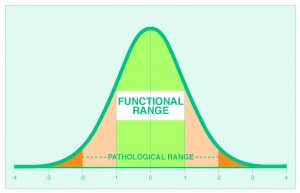 Functional Versus Pathological Blood Chemistry Lab Ranges
Functional Versus Pathological Blood Chemistry Lab Ranges
When analyzing blood issues, there are two main types of ranges in the field of blood chemistry analysis: a “functional” and “pathological range.” The “pathological range” used by all laboratories that perform blood chemistry analysis use these ranges. These lab reference ranges are formulated from testing sick people, not healthy people. Therefore, if you fall in this range you may be told that everything is normal, yet continue to have the same problems. A narrower lab range, which we use, is the “functional range.” Blood tests that focus on the “functional range” are taken from healthier people, and these tests are used to assess risk for health problems and to detect health challenges before they develop. Our functional ranges have been determined by the American Association for Clinical Chemistry (AACC).
Blood Chemistry Analysis
Blood Chemistry Analysis is important because it helps to catch health problems early, before they manifest into more serious health challenges. Our “Comprehensive Bio-screen” panel helps to identify the degree of health in a patient, as well as any metabolic imbalances. It is relatively inexpensive and can help to identify and manage many serious health challenges. Our comprehensive Bio-screen detects 67 biomarkers plus 13 items evaluated in urinalysis. When we apply functional ranges to these values, we can quickly determine metabolic imbalances, and correct a problem early. This test gives both the patient and the healthcare practitioner the peace of mind that their metabolism has been thoroughly screened.
Absorption issues
Many patients come to us because they have been diligent about supplementation and eating healthy, but still seem to be experiencing issues. For example, we have had patients who take the appropriate levels of Magnesium but are plagued with muscle cramping. We have used the TRIAD blood spot look for metabolites, or end products, that result from a nutrient or lack thereof. This has helped us identify situations where a mineral or for example, Vitamin D, is present but not being properly being used by your body. Most standard blood tests only identify the presence of a nutrient. By assessing that nutrients are not being used by your body even when the appropriate levels exist, helps us to identify deficiencies that can be preventing your having optimal health.







